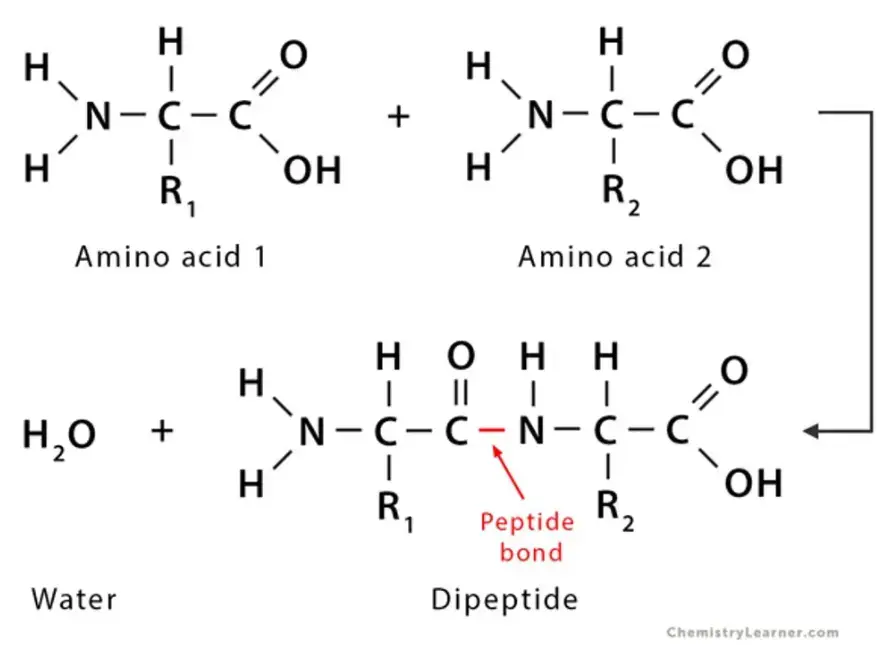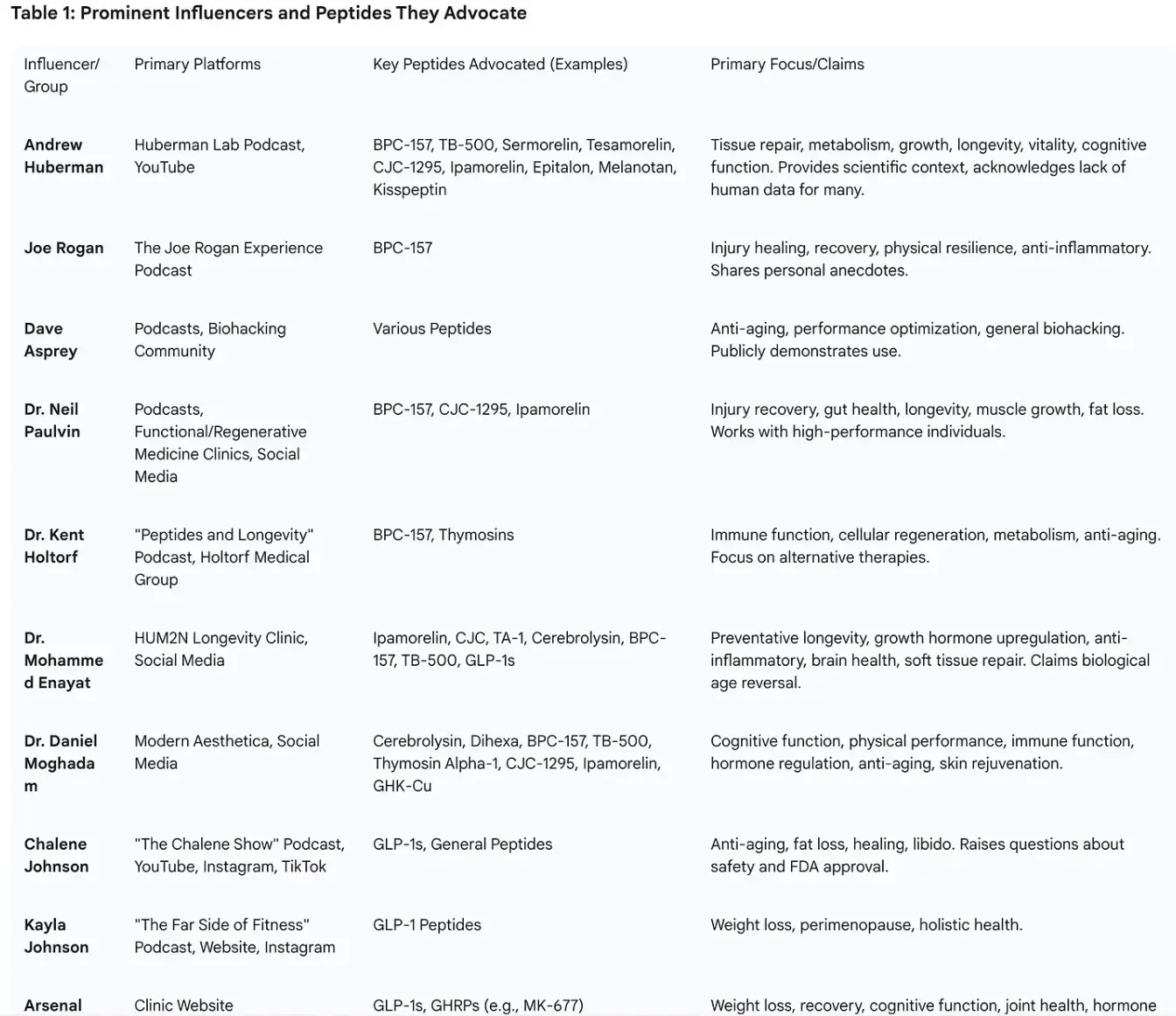Peptide craze review (GLP-1 is a peptide) - Topol
The Peptide Craze - The Surge in Use of Off-Label and Non-FDA Approved Peptides
Peptide Bond between 2 amino acids

Peptide uses - both on and off lable

Influencers

Summary of Peptides from Perplexity AI July 2025
| Peptide Type | Primary Uses | Scientific/Clinical Proof |
| Growth hormone-releasing peptides | Muscle and bone recovery, athletic performance | Used by athletes; some clinical use but safety is closely monitored; evidence mainly in specific populations. |
| Creatine peptides, Follistatin | Muscle building, weight/fat loss | Popular in supplements; some preclinical data, but robust clinical evidence is lacking for common formulations. |
| Collagen peptides | Skin hydration, elasticity, anti-aging | Supported by randomized, placebo-controlled studies showing improvements in skin elasticity and hydration. |
| GLP-1 receptor agonists | Type 2 diabetes, weight loss/obesity, cardiovascular, kidney, and liver disease | Strong FDA and global regulatory approval; large RCTs and real-world studies confirm efficacy for glycemic, weight, and cardiac benefits. |
| Therapeutic FDA-approved peptides | Treatment of specific diseases (diabetes, cancer, osteoporosis, etc.) | Over 100 FDA-approved peptide drugs with clinical trials (e.g., exenatide, liraglutide, abarelix). |
| Bioactive peptides | Lower blood pressure, reduce inflammation, antimicrobial, support immune health | Confirmed in research and reviews in specific peptide families. |
| Wound-healing peptides | Promote healing of chronic wounds and ulcerations | Targeted studies support their use, especially in diabetic ulcers and difficult wounds. |
| Cell-penetrating peptides (CPPs) | Enhance drug delivery, enable targeted therapy | Demonstrated in research for facilitating intracellular drug and gene delivery. |
Here are the details and references
